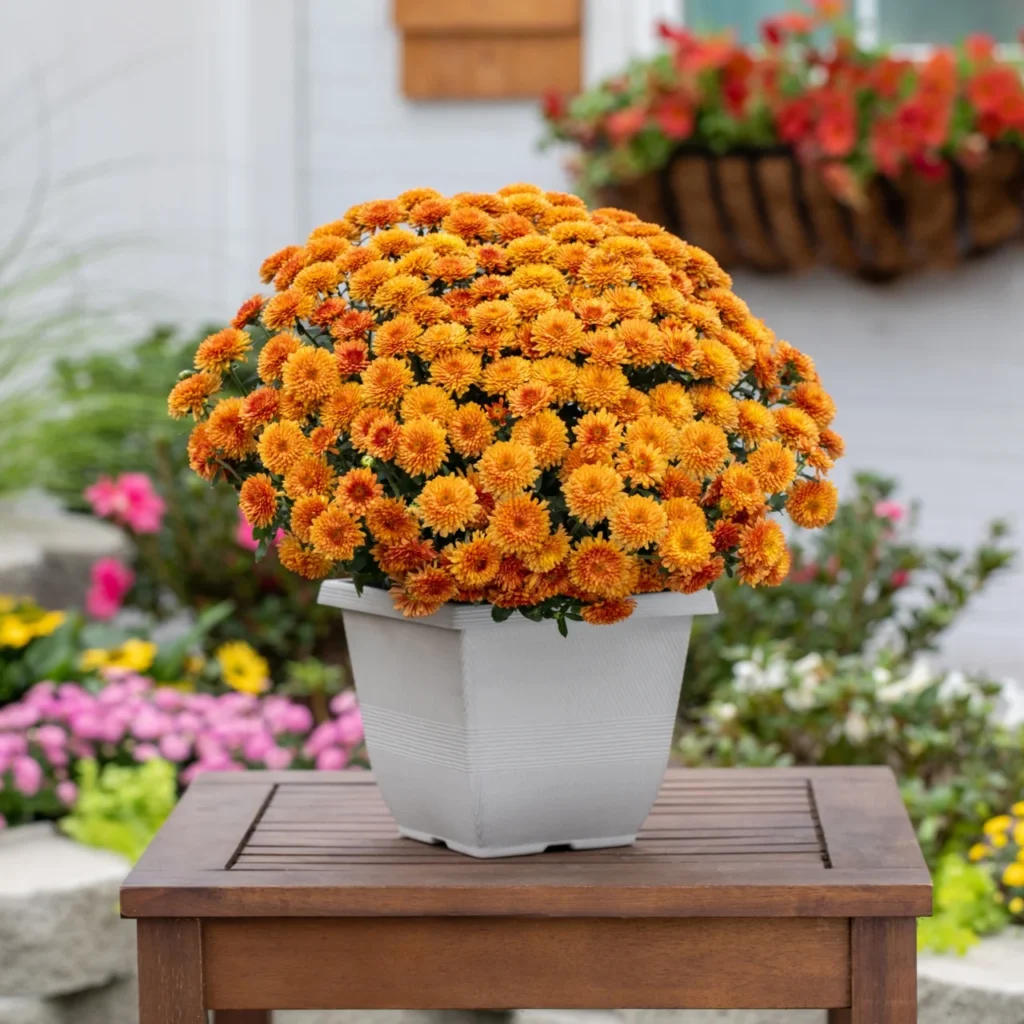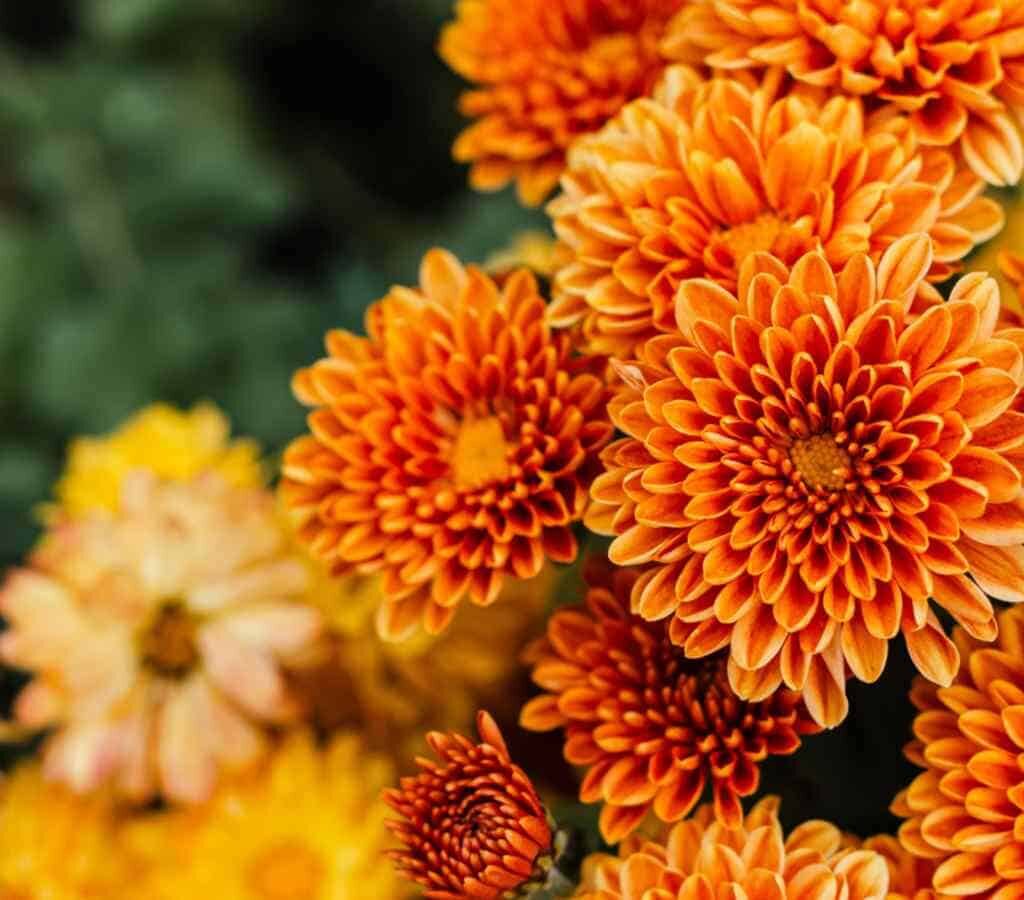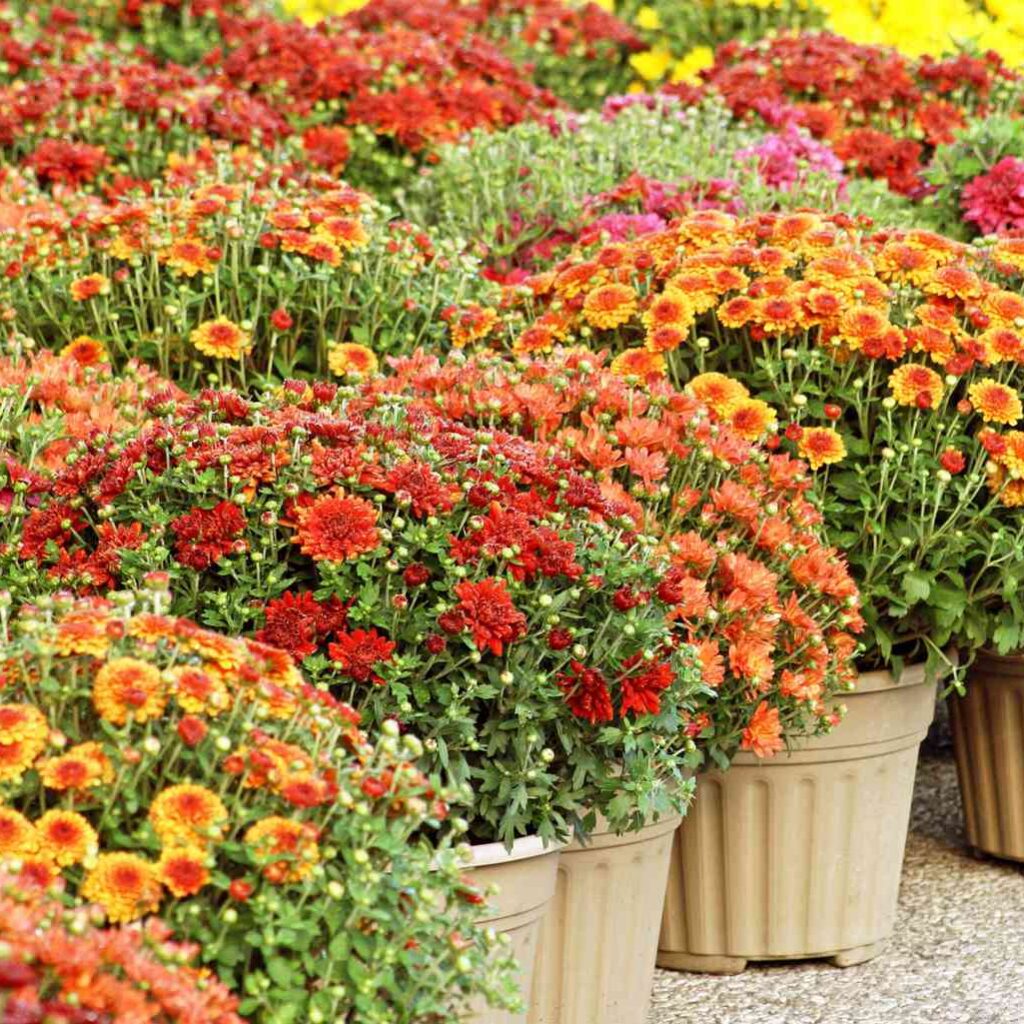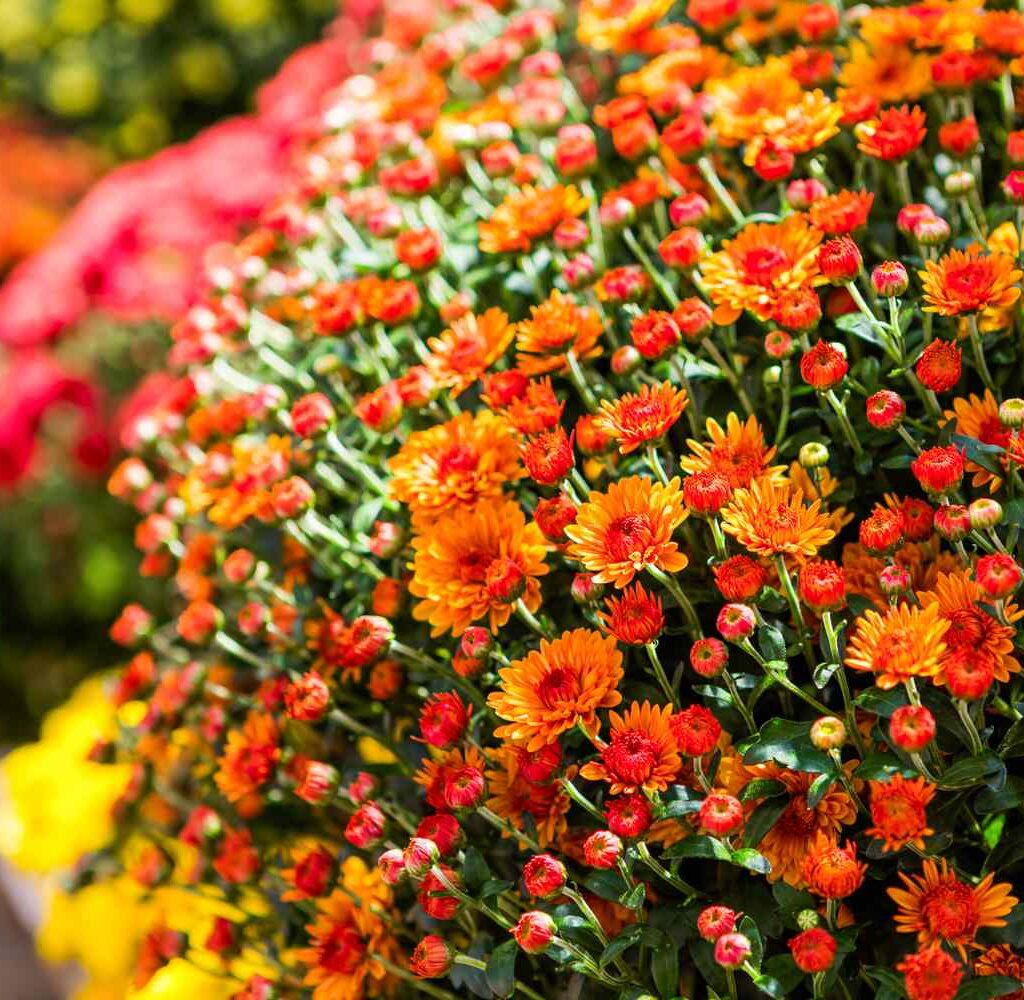Chrysanthemums, commonly known as “mums,” are the quintessential flower of fall, renowned for their vibrant hues and robust blooms that brighten up gardens just as most summer plants begin to fade. Whether you’re a seasoned gardener or a novice looking to add a touch of charm to your autumn landscape, chrysanthemums are a delightful choice. This article explores everything you need to know about growing chrysanthemums during the autumn season—from selecting the right variety and planting to care, maintenance, and seasonal tips.
Why Chrysanthemums Are Perfect for Autumn

Chrysanthemums are beloved for their late-season bloom, offering color and vibrancy from late summer through the first frost. These hardy perennials thrive in cooler weather and come in a wide spectrum of colors—reds, oranges, yellows, purples, and whites—making them ideal for fall-themed gardens. Additionally, chrysanthemums are low-maintenance and adaptable to various climates, which further adds to their charm.
1. Choosing the Right Chrysanthemum Varieties
There are two primary types of chrysanthemums:
A. Garden (Hardy) Mums
- These are perennial varieties that can survive winter with proper care.
- Popular hardy types include Clara Curtis, Sheffield Pink, and Hillside Sheffield.
- They are best suited for outdoor planting and long-term garden displays.
B. Florist (Tender) Mums
- These are bred primarily for indoor arrangements and usually do not survive frost.
- They bloom earlier and have more decorative flower forms.
- Best grown in containers and brought indoors as temperatures drop.
Tip: For autumn planting, opt for garden mums to ensure a more durable and longer-lasting bloom outdoors.
2. Planting Chrysanthemums for Fall Blooms

Timing is everything with chrysanthemums.
A. Best Time to Plant
- Early spring to early summer is ideal for planting hardy mums.
- However, mums sold in late summer or early fall are already in bloom and can be used for immediate color in your garden.
B. Location & Soil
- Choose a sunny location with at least 6 hours of direct sunlight daily.
- Ensure well-draining soil enriched with organic compost.
- Ideal soil pH: 6.5 to 6.7
C. Planting Technique
- Dig a hole twice the width of the root ball.
- Space plants 18–24 inches apart to allow air circulation.
- Cover roots with soil, press gently, and water thoroughly.
3. Essential Care and Maintenance Tips
Chrysanthemums are easy to care for but require consistent attention to thrive in autumn.
A. Watering
- Keep soil consistently moist but not soggy.
- Water at the base of the plant to avoid leaf diseases.
- Reduce watering slightly once flowering begins.
B. Mulching
- Apply 2–3 inches of mulch (like straw or shredded bark) around the base.
- Helps maintain soil moisture and temperature.
- Prevents weed growth.
C. Fertilization
- Apply a balanced fertilizer (10-10-10) monthly in spring and early summer.
- Stop fertilizing in late summer to allow plants to prepare for blooming and dormancy.
D. Deadheading
- Regularly remove spent blooms to encourage new flower growth.
- Promotes prolonged blooming into late fall.
4. Pinching for Fuller Plants

Pinching is a simple technique that encourages bushier growth and more blooms.
How to Pinch:
- When the plant reaches 6 inches in height, pinch off the top 1 inch.
- Repeat this process every 2–3 weeks until mid-July.
- Avoid pinching after July 15, as it may delay blooming.
Bonus Tip: Pinching increases the number of flower buds and improves the overall shape of the plant.
5. Managing Pests and Diseases in Fall
While mums are relatively resistant to pests, autumn weather can bring a few challenges.
Common Pests:
- Aphids
- Spider mites
- Leaf miners
Control Methods:
- Use neem oil or insecticidal soap.
- Introduce beneficial insects like ladybugs for natural pest control.
Common Diseases:
- Powdery mildew
- Leaf spot
- Rust
Prevention Tips:
- Ensure good air circulation between plants.
- Water early in the day to allow leaves to dry.
- Remove and discard infected leaves.
6. Overwintering Your Mums

If you want your chrysanthemums to return next fall, you need to help them survive the winter.
A. In Colder Climates:
- After the first frost, cut stems to 3–4 inches above ground.
- Apply a thick layer of mulch (4–6 inches) to insulate the roots.
- Do not remove mulch until danger of frost has passed in spring.
B. In Warmer Climates:
- Mums can remain in the ground with a lighter mulch layer.
- Regular pruning in early spring will promote new growth.
7. Container Gardening with Chrysanthemums
If you’re tight on space or prefer portability, growing mums in containers is an excellent choice.
Container Requirements:
- Choose a pot at least 12 inches in diameter with drainage holes.
- Use high-quality potting mix with good drainage.
- Water more frequently, as containers dry out faster.
Seasonal Display Tip:
Group potted mums with pumpkins, hay bales, and ornamental cabbages for a festive autumn display on your porch or patio.
8. Companion Planting Ideas

Pairing chrysanthemums with other fall-loving plants can enhance your garden’s aesthetics.
Great Companions:
- Ornamental grasses – for height and texture.
- Sedum – adds late-season interest.
- Asters – complementary in bloom time and color.
- Pansies and violas – add contrast at the base.
These combinations create visually striking beds and borders perfect for the season.
9. Propagating Chrysanthemums
Want more mums next year? Propagate them easily through cuttings or division.
A. Stem Cuttings:
- Take a 4–6 inch cutting from new growth in early summer.
- Dip the cut end in rooting hormone.
- Plant in moist potting mix and cover with plastic to retain humidity.
- Roots should develop in 3–4 weeks.
B. Division:
- Divide mature clumps every 2–3 years in spring.
- Helps maintain plant health and vigor.
10. Fun Facts & Folklore About Chrysanthemums
- In many cultures, chrysanthemums symbolize joy, longevity, and optimism.
- In Japan, it is the symbol of the Imperial family.
- In traditional Chinese medicine, mums are used in teas to reduce inflammation.
- The name chrysanthemum comes from Greek: chrysos (gold) and anthemon (flower).
Final Thoughts
Chrysanthemums are more than just beautiful flowers—they’re a celebration of autumn’s rich colors and cozy charm. With the right planning and care, you can enjoy an impressive garden filled with these radiant blooms well into the crisp days of fall. Whether you’re planting in borders, containers, or designing seasonal displays, chrysanthemums offer an abundance of color and joy.
Ready to grow your own charming fall mums? Start today and watch your garden glow with autumn magic!



